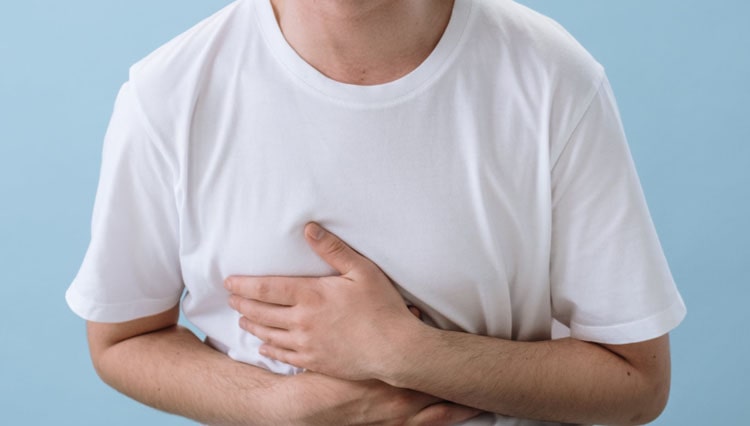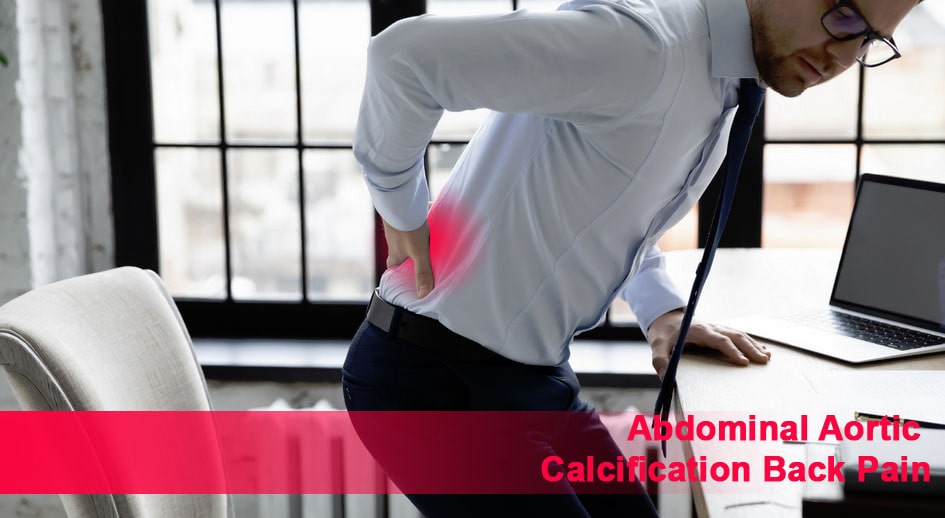Do you have any idea about abdominal aortic calcification back pain? Aortic calcification refers to a social phenomenon caused by the continuous modification of aging.
On the other hand, the decrease of blood vessel elasticity or the development of blood vessel wall harm.
Especially, aortic calcification is a sign of human cell aging. Only about 20% of elderly consumers over 60 may affect the presence of aortic calcification.
What is calcification of the abdominal aorta?
In the general population, the cycle of atherosclerosis gains year by year with age. X-ray photos of the chest and lower abdomen show that calcified spots occur under the vascular intima.
Also, the endless growth of calcification became more evident. Abdominal aortic calcification increases the risk of congestive heart failure.
How severe is calcification of the abdominal aorta?

How severe is calcification of the abdominal aorta
Kidney function harm in patients with reasonable to late-stage CKD. This is why the disorder of calcium and phosphate Horus metabolism is more significant. This increases the risk of elevated blood calcium and blood phosphorus vascular calculation. Calcification mainly divides into two types.
One is the calcification of the vascular intima, which seems mostly in the large arteries. It relates to the formation of atherosclerotic plaque. The other is the calcification of the vascular media.
It occurs mainly on the small roads and is about arterial plaque. Atherosclerosis has nothing to do with it.
In the present study, both vascular calcification and atherosclerotic plaque are at risk for CKD patients’ cardiovascular events. After these two diseases occur, they gain rapidly and are almost irreversible.
In recent years of research, vascular calcification closely relates to malignant events. We can say, such as atherosclerotic plaque rupture, myocardial infarction, and cardiac charge.
It is an essential factor in predicting patient mortality [1]. This study mainly used cardiac ultrasounds and sided abdominal radiography.
To analyze vascular calcification in patients with refined CKD, to comprehend the risk factors of calcification in “CKD” patients. To provide proof for the treatment and deterrence of calcification in clinical patients.
Can abdominal aortic calcification be reversed?
People who are not young and older go to the hospital for physical examination. They will find such definitions in the chest radiograph.
Such as calcification of the aortic wall, jutting the aortic lump, widening and tortuous calcification of the aortic arch, and so on.
As the name implies, aortic calcification is the presence of calcified plaques on the aorta wall. Its high density is like a stone, which can take on chest radiographs.
Aortic calcification generally grieves and cannot remove by itself. It is one of the indications of systemic atherosclerosis. There is a difference between aortic calcification and aortic valve calcification. Simple aortic calcification does not need to be too nervous.
But aortic valve calcification and reduced elasticity may cause the aortic valve to see or insufficiency. It may lead to heart improvement, thereby affecting heart function.
What is the treatment for a calcified aorta?
Aortic calcification on a chest radiograph is only an imaging explanation. It does not represent a disease but a signal of vascular sclerosis. When aortic calcification is found on physical examination, further investigation compels to determine.
Whether there is another vascular sclerosis, blood lipids and blood sugar can meet. Measure blood pressure to see if there are problems with cardiovascular and cerebrovascular arteriosclerosis.
Also, do carotid color Doppler ultrasound, heart color Doppler ultras, and electrocardiogram.
The tortuous calcification of the simple aortic arch does not require treatment. But conforming measures need to seize to prevent its further growth. Quit smoking and alcohol and reduce high fat intake in the diet.
Also, eat more vegetables and fruits, exercise correctly, and lose weight.
For patients with essential hypertension, blood pressure needs to move monitors regularly. Besides, oral drugs to lower blood pressure should prevent the normal range.
For people with hyperlipidemia, in addition to diet and exercise. Oral start in drugs expects blood lipid-lowering treatment. Diabetes is also a high-risk factor for arteriosclerosis.
Aortic calcification, moreover discovers in diabetic patients. The focus is on controlling blood sugar and reducing cardiovascular and cerebrovascular complications.
How common is abdominal aortic calcification?
Although abdominal aortic wall calcification is widespread in the elderly, if there are no evident symptoms, the patient should not be too nervous. Pay attention to a low-fat, low-salt, high-quality protein diet in your daily lifespan.
Besides, do it properly. Some sports exercises to improve physical ability. Also, develop the good habit of going to bed early and getting up early; just don’t smoke and drink.
Vascular calcification includes aortic calcification, which is common in dialysis patients. At the same time, mineral metabolism diseases are also reported as risk factors for vascular calcification.
In recent years, it has become more and more common. However, to assess vascular sclerosis quantitatively through EEG topographic maps and CT examinations.
However, these inspection methods require special tool inquiries. They are very expensive to operate, which are not easy to complete quickly in general clinical practice.
Abdominal aortic calcification reports having a high red ability for the incidence and mortality of cardiovascular diseases; however, whether the abdomen’s cosmic calcification is still more common in people with vascular calcification and cardiovascular disease.
Is aortic calcification severe?
Whether the aortic calcification is severe or not depends on the severity of the calcification. If you only look at the chest radiograph, you can only see the aortic arch’s small calcification. It may not be severe.
The inner membrane is harshly damaged, including ulcers, stenosis, and the possibility of thrombus injury. Limiting astral calcification to a mixture of cosmic curves and aorta will not cause the degree of cosmic calcification to be severe.
Conclusion
I hope you will benefit from reading this article. Because here, you will get a complete idea about abdominal aortic calcification back pain.
We talk about more Back Pain
Lower Back Pain Due to Gas, How can Tight Muscles Result in Back Pain, The Tightness of The Sciatic Nerve Can Result in Lower Back Pain, How to Use a Cane with Back Pain

